Our Students
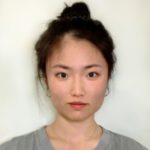
PHD Student
Amy Ma
Read Bio
“Transcranial magnetic stimulation and neuromuscular control of the shoulder.”
Amy is a PhD student in the School of Health and Rehabilitation Sciences in the Faculty of Health & Behavioural Science at the University of Queensland and has a Bachelor of Physiotherapy from the University of Canberra. Her current research is focused on using Transcranial Magnetic Stimulation (TMS) and Electromyography (EMG) data, to explore the central mechanisms of neuromuscular control in patients with healthy and/or pathological shoulders.
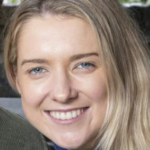
PHD STUDENT
Anna Thomson
Read Bio
Shoulder kinematics and muscle function pre and post- reverse shoulder arthroplasty: a 3D motion capture and electromyographic study to guide clinical practice
Anna joins the team with a strong physiotherapy background working for the Queensland Orthopaedic Clinic based at Greenslopes Private Hospital. Her project at the centre will provide essential understanding of effectiveness of shoulder arthroplasty surgery. This is essential knowledge for guiding clinical practice from surgery to rehabilitation.

PHD STUDENT
Arthur Fabre
Read Bio
Arthur is a PhD student within the School of Nutrition and Exercising Science in the Faculty of Health at QUT.
He obtained his Master of Engineering and Human Movement Sciences from the University of Paris-Saclay. His current research focuses on the development and validation of an Inertial Measurement Units (IMU) system to assess the kinematics of the shoulder and upper limb. This technology aims to better evaluate and understand upper limb movement deficiencies and explore the efficiency of approaches to reduce these impairments.
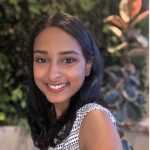
PHD STUDENT
Asawari Parulekar
Read Bio
“Exploring the role of mechanotransduction in producing inferior surgical outcomes for aged patients with Rotator Cuff Tears (RCTs)”.
Asawari is currently undertaking her PhD with ARCITTC-JB at UQ. She entered the fields of biomechanics & regenerative medicine as a research assistant during her time as an undergraduate Chemical and Biological Engineer. Her current research in interfacial tissue engineering investigates the complexities of attaching mechanically mismatched, soft (tendon) and hard tissues (bone) from a cell biological lens. Her project focuses on understanding the mechanisms by which cells respond to mechanical cues in the context of ageing tissues within the human shoulder.
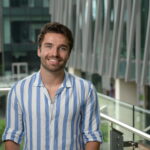
PHD Student
François Bruyer-Montéléone
Read Bio
“Development of a musculoskeletal modelling platform for simulating pathological conditions of the shoulder joint.”
François will conduct his PhD within the School of Mechanical, Medical & Process Engineering at QUT with Prof Peter Pivonka. His research is focused on developing a musculoskeletal modelling platform for simulating pathological conditions of the shoulder joint with an aim to better understand the effect of muscle architecture changes on shoulder kinematics & kinetics after surgical intervention.
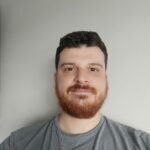
PHD STUDENT
Giacomo Nardese
Read Bio
“Neurophysiological adaptations to shoulder injuries: cortical function of shoulder muscles and motor control implications”
Giacomo graduated with a Master of Science in Sciences and Techniques of Preventive and Adapted Physical Activities at University of Bologna (ITA) and with a Mater of Research in Spinal Pain at University of Birmingham (UK).
His last project focused on understanding whether experimental pain associated to movement might elicit different kinematic and muscular adaptations in healthy participants when compared to a constant experimental pain.
His current project will focus on mapping shoulder’s muscles in people with and without shoulder pathologies using transcranial magnetic stimulation (TMS) and whether differences in those heatmaps might be related to shoulder’s motor control.
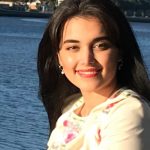
Phd Student
Sepideh Shemshad
Read Bio
Sepideh is currently undertaking her PhD with ARCITTC-JB at UQ. Her project aims to develop a delivery platform for controlled release of biochemical signals for rotator cuff tissue regeneration. Sepideh completed her Master of Science at Iran University of science and Technology in Biomaterial Engineering, where her research was focused on Fabrication and Characterization of Scaffolds for bone tissue engineering.
Moreover, she worked as a Research Assistant at Sabanci University in Turkey, where she focused on fabrication of polymeric nanofibers and nanotubes for sustained and targeted drug delivery.
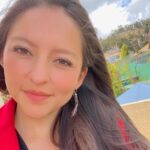
PhD Student
Stephanie Belen Michelena Tupiza
Read Bio
Development of multicomponent, multimodal scaffolds for enhanced rotator cuff repair
Stephanie joins the centre in support of Program 3: Engineered Tissue Scaffolds. After previously completing her masters at the University of Queensland (UQ), she returns to pursue her passion in bioengineering and anatomy.
Affiliate Students
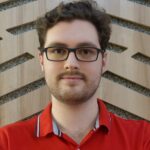
Affiliate PhD
Alex Lee-Medland
Read Bio
Alexander is a PhD candidate in Biomedical Engineering at QUT. His research aims to investigate the quality of bone through a range of scanning techniques such as qBEI, micro-CT and Raman to assess multiple properties of bone. This research aims to assess the effects of drug treatments on the quality of bone.
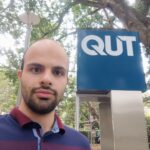
AFFILIATE PHD
Alireza Mahavarpoor
Read Bio
Biomechanical investigation of revision reverse shoulder arthroplasty surgery using FEA and AI algorithms
Alireza joined the team in Nov 2023 and is undertaking his Phd within the school of Mechanical, Medical and Process Engineering under the supervision of Prof. YuanTong Gu. He holds a master’s degree in the field of mechanical engineering from University of Tehran, Iran. He is interested in conducting first-hand research projects that play a key role in facilitating human life and assisting people with health problems. His main focus is in computational models as well as artificial intelligence algorithms.
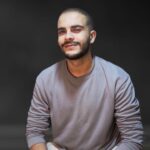
PHD STUDENT
Amine Lagzouli
Read Bio
“Development of a Deep Learning-Based Automated Segmentation, Registration, and Analysis Tool for Bone Remodeling and Adaptation Assessment”
Amine is currently conducting a joint PhD at the Queensland University of Technology (QUT) and the University of Paris-Est Créteil (UPEC). His research is focused on developing artificial intelligence methods for medical imaging, particularly in creating a deep learning-based pipeline for the segmentation, registration, and analysis of high-resolution bone imaging. His work is geared towards automating bone assessment for both biomechanical research and clinical orthopedic practices. Before undertaking his PhD, Amine completed his Engineering degree in Artificial Intelligence and Data Science from The National Higher School of Arts and Crafts Meknès.
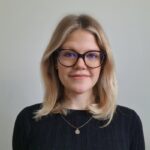
Affiliate PhD
Corinna Modiz
Read Bio
“Development of multiscale computational models of bone adaptation to better understand bone structure evolution”
Corinna will conduct her PhD at the Faculty of Mechanical, Medical and Process Engineering under the supervision of Prof Peter Pivonka. Her project focuses on the development of computational models for bone remodelling and relevant underlying processes such as bone mineralisation. Corinna completed her Bachelor’s degree in Mathematics and her Master’s degree in Biomedical Engineering at the Technical University of Vienna.

Affiliate PhD
Haider Al-wzwazy
Read Bio
Thesis Title: Adaptive Multi-Task Deep Learning Framework for Orthopaedics Medical Imaging
Primary Supervisor: Dr Laith Alzubaidi
Description of Previous Study Areas and Experience:
Haider is focusing on addressing challenges in data scarcity, generalisation, and explainability through advanced AI techniques such as transfer learning and self-supervised learning. He holds a master’s degree from the University of Missouri, Columbia, USA, where he built a solid foundation in AI research.
Professionally, Haider brings extensive expertise in digital transformation, with a proven track record as IT Department Manager in the Halfaya oil fields with PetroChina International Company. At Maysan Oil Company, he held prominent leadership positions, including Chief Engineer, Head of the IT Section, and Project IT Manager. With a portfolio spanning over 60 successfully managed projects, Haider demonstrates advanced proficiency in project management methodologies, strategic planning, and operational efficiency, ensuring impactful outcomes in complex, high-stakes environments.
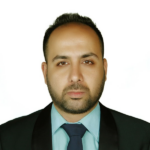
AFFILIATE PHD
Hamid Reza Jarrah
Read Bio
“Investigation the effects of surgical variables on loosening in Reverse Shoulder Arthroplasty (RSA)”
Hamid joined the team late last year under A/Prof Saulo Martelli, with joint supervision from the team at Metro North Health‘s Herston Biofabrication Institute.
In Australia, over 80% of total shoulder arthroplasty procedures performed in 2019 were RSA. A study of 4124 shoulders with RSA reported a complication rate of 16.1%. Through his research, Hamid hopes to investigate the surgical variables to eliminate prothesis loosening to reach the best performance for the implementation of medical implants and prostheses.
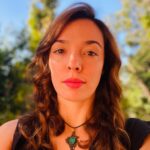
Affiliate PhD
Natali Uribe Acosta
Read Bio
“Statistical shape and appearance model of the proximal femur to develop a parametric finite element model.”
Natali has a Bachelor and Masters of Biomedical Engineering from the Universidad de Antioquia Colombia and the Universidad EIA Colombia. Her research aims to develop a SSAM of the proximal femur. For these generated models to be useful, the model will generate FE meshes that are suitable for Finite Element (FE) calculations that will help to study the mechanical changes in the bone during physical exercise, taking into account how variations in the mechanical conditions of the human bones may be related to geometry or bone distribution during daily activities.
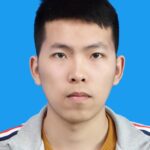
Affiliate PhD
Zehui (Wyatt) Zhao
Read Bio
Project title: 3D medical imaging recognition using deep learning
Supervisor: Dr. Laith Alzubaidi
Wyatt is a new PhD student at the School of Computer Science and the ARC Training Centre for Joint Biomechanics. During his previous study period, he received a Bachelor of Information Technology and a Master of Philosophy degree from QUT, as well as a Master of Information Technology degree from the University of Sydney.
For the past two years, he has been working with Dr. Laith Alzubaidi, ARC Training Centre postdoc, to tackle data scarcity in medical imaging. His research focuses on deep learning, computer vision, transfer learning, and self-supervised learning.
Student Alumni
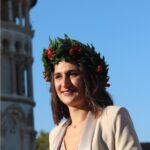
AFFILIATE MASTERS
Alessia Bartali
Read Bio
Alessia is a master’s degree in Biomedical Engineering at the University of Pisa, where her academic journey has provided her with a strong foundation in several key areas. Most notably, she has immersed myself in the study of biomechanics, which involved an extensive curriculum covering the modelling of the human body to assess its responses to external perturbations. Additionally, her program has placed a significant emphasis on two other critical domains: the prototyping of medical devices and the application of robotics in surgical and rehabilitation contexts.
Alessia’s primary research interest lies within the field of biomechanics, with a specific focus on developing computational models for analyzing the behaviour of the human body when prosthetics are introduced. Her current capstone project centers on the creation of a finite element model designed to predict the stability of an inverse shoulder implant, while also conducting a comparative analysis of different surgical approaches.
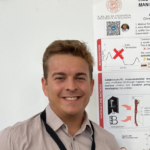
Affiliate PhD
Alex Bersani
Read Bio
“Modelling suboptimal muscle control in patients with Parkinson’s disease”
Alex is a PhD candidate in the “Health and Technology” PhD programme at the University of Bologna. His work focuses mainly on methodologies to model neuromuscular sub-optimal control.
The nervous system of healthy adult subjects likely selects muscle activation patterns that minimize certain cost functions, e.g., the smallest metabolic energy consumption. Unfortunately, for a wide range of pathological subjects the neuromuscular control may deviate from the previous assumption (we define it as sub-optimal control).
Different methodologies to model sub-optimal control were proposed based on various approaches to estimate the muscle activation pattern. I focused on the “Stochastic approach”, which combines Bayesian statistics and Markov Chain Monte Carlo algorithm to sample a wide solution space of muscle activations, most of which are classified as sub-optimal.
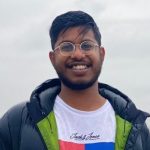
PHD STUDENT
Arun Jolly
Read Bio
“Relating anatomy, laxity and stability of the glenohumeral joint”.
Arun is currently undertaking his PhD within the Training Centre, based at QUT.
Arun is a Mechanical Engineer with postgraduate degree in Mechanical Design Engineering from Deakin University, Australia and an undergraduate degree in Mechanical Engineering from Mahatma Gandhi University, India. He has experience in numerical modelling and experimental studies for various different mechanical engineering applications. Arun’s PhD project focuses on exploring the relationship between anatomy, laxity, and stability of the glenohumeral joint across the population to assist with developing improved shoulder reconstruction planning, surgical procedure and rehabilitation.
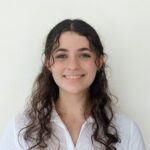
AFFILIATE UG STUDENT
Ashleigh Westmoreland
Read Bio
Microsegmentation of tibia and fibula using microCT and CT images
Ashleigh is a 3rd year medical engineering and biology student interested in developing biomechanical skills to carry into post-graduate research. Her Work Integrated Integrated proeject with the centre focuses on the manual microsegmentation of microCT and CT images of tibia and fibula of mice that have undergone various mechanical loading and medical stimulus.
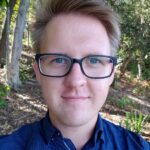
AFFILIATE PHD
Corey Miller
Read Bio
Corey studied a Bachelor of Medical Engineering at QUT and graduated in 2019 with First Class Honours. In 2020 he started a PhD in Biomechanical Engineering, investigating cortical bone’s adaptive response to mechanical loading and drug therapies in the mouse tibia model and developing a novel simulation platform to predict this response by combining beam theory mechanics with cell population dynamics. This project has helped developed his knowledge and skills in mechanical engineering within the context of human anatomy and biology, as well as computational programming with a focus on modelling and simulation. His work has been presented at conferences held in Australia and Europe, including the 11th Clare Valley Bone Meeting (2020) and the 26th Congress of European Society of Biomechanics (2021), and has been published in the journal Frontiers in Bioengineering and Biotechnology.
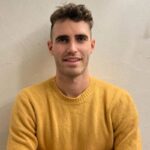
AFFILIATE MASTERS
Francesco Magnani
Read Bio
Francesco, who is completing his Master’s project with the Centre titled “Development and validation of customised biomechanical models through experimental movement data for sports medicine applications (knee)” at QUT (Queensland University of Technology) under the supervision of A/Prof Saulo Martelli, will be spearheading our biomechanical model development efforts. He joins us from the Alma Mater Studiorum – Università di Bologna, where his expertise will be pivotal in applying these models to enhance performance and prevent injuries in the sports field.
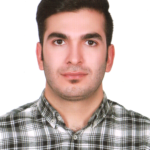
PHD STUDENT
Hossein Ahmadi
Read Bio
Hossein is a PhD candidate in the Prince of Wales Clinical School at Neuroscience Research Australia, University of New South Wales. His project aims to develop a 3D finite element model of the shoulder muscles to examine the effects of soft tissue tensioning and muscle activation on joint loading and stability. With a MSc degree at University of Tehran focusing on Injury Biomechanics, He joined University of Technology Sydney as a Research Assistant working on Inertial Microfluidics with the potential application in disease diagnostics.
He has a strong foundation and high level of expertise in Computational Modelling and Simulation across different industries.
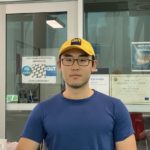
PHD STUDENT
Jinshuai Bai
Read Bio
Jinshuai is a PhD student under the supervision of Prof. Yuantong Gu at QUT. He has finished his master by research degree at QUT, majoring in data-driven computational mechanics.
Currently, he is investigating the possibility of combination of deep learning techniques and computational mechanics for biomechanics applications. Jinshuai has been working on computational mechanics for many years. He has solid foundations for mechanics and good experiences in various computational methods.
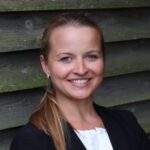
Affiliate PHD
Laura Meszaros-Beller
Read Bio
Laura is pursuing a PhD with the Biomechanics and Spine Research Group at QUT after receiving the BSc and MSc degree in Medical Engineering from the University of Stuttgart/Tübingen, Germany. Her research is focused on the multibody modelling of spine biomechanics.
During her PhD candidature, Laura developed a simulation pipeline for neuro-musculoskeletal forward-dynamics and inverse-dynamics simulations of the spine for the assessment of functional spinal stability and load-sharing between active and passive soft tissues.
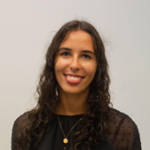
AFFILIATE UG STUDENT
Lisa Mazouzi
Read Bio
Lisa Mazouzi is a fourth-year student at Centrale Marseille General Engineering School in France. Given her interest in developing skills in the field of biomechanics, she is currently undertaking a six-month internship at QUT on computational modelling of bone adaptation under centre Deputy Director, Prof Peter Pivonka.
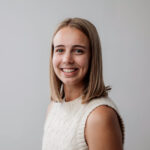
Centre Administration Officer
Maggie-May Hornigold
Read Bio
Maggie is currently in her final year of undergraduate studies at QUT, pursuing a dual major in Business Management and Medical Engineering. Whilst undertaking administrative duties, I am continuing my deep learning project on shoulder image segmentation, which is part of Program 1 for my work-integrated learning.
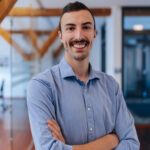
Affiliate PhD
Markus Gambietz
Read Bio
Markus is a visiting HDR student from FAU, Germany in the field of biomechanics. He is visiting QUT and the ARC Training Centre from Feb – April 2025 to continue his work on MSK models. He joins Prof. Peter Pivonka and Prof. Katie McMahon to collaborate on joint movement force estimation.
Project Abstract:
Accurate joint moment estimation in musculoskeletal models depends on having reliable body segment inertial parameters (BSIPs). Traditional BSIPs are based on cadaveric studies with limited diversity and vastly different values. Currently, BSIPs are personalized using uniform scaling methods that do not account for individual body shape differences. As a consequence, not all measured forces can be explained by these models, and residual forces remain. Markus presents an approach to estimate BSIPs using 3D body hulls derived from smartphone images. Hull-based personalisation can reduce residual forces and has practical implications for joint moment estimations, providing an alternative perspective when compared to residual optimisation methods such as add Biomechanics and benchmarked against medical imaging.
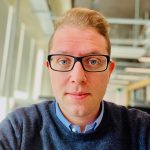
Investigating Team
Marco Branni
Read Bio
Marco was a PhD candidate in Biomedical Engineering at QUT and has since gained employment with medical start-up company Akunah at our clinical partner, Greenslopes Private Hospital where he continues his research. His research aims at understanding the contribution to support of cortical and trabecular bone structures using high-resolution images of human femurs, microstructural finite-element modelling, and bone loads caused by physical activity. Before his PhD, he completed his B.Eng. in Biomedical Engineering and M.Sc. in Biomechanics Engineering from the Polytechnic University of Turin (Italy). Marco commenced researching in orthopaedics during his visiting student program at the Université libre de Bruxelles and Ghent University Hospital (Belgium), where he was actively involved in biomechanics projects working with horses, sheep, and human knees specimens.
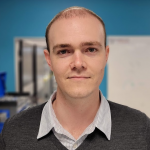
PHD STUDENT
Morgan Windsor
Read Bio
“High precision robotic surgery for the shoulder”.
Morgan is currently undertaking his PhD within the Training Centre and QUT’s Centre for Robotics.
Morgan completed a Bachelor of Engineering (Mechatronics) at QUT and has a background in industry as an electrical engineer. Morgan’s research interests include developing enabling technologies to provide tools to assist surgeons in precisely executing preoperative plans.
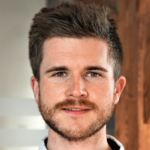
Affiliate PhD
Simon Heinrich
Read Bio
Simon Heinrich is a doctoral candidate from Friedrich-Alexander-Universität (FAU) Erlangen-Nürnberg, Germany. Simon holds a B.Eng. from OTH Regensburg and an M.Sc. in Mechanical Engineering from FAU. Since 2021, he has been conducting his research at the Institute of Applied Dynamics at FAU within the CRC EmpkinS. His work centers on data-guided optimal control simulations of hand movements in the context of inflammatory arthritis. During his research stay at QUT, he will explore with Dr. Maxence Lavaill a novel yet powerful muscle-path modeling approach that could improve the investigation of complex structures like the hand and shoulder.
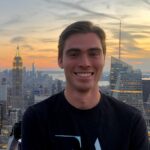
AFFILIATE MASTERS STUDENT
Stan Haanen
Read Bio
Stan embarked on an exciting internship journey at Queensland University of Technology, bringing his expertise from the Technical University of Eindhoven, where he is currently pursuing his master’s degree in Biomedical Engineering. Under the mentorship of A/Prof Saulo Martelli, Stan has joined the research community for joint biomechanics at QUT to further his studies in the field of joint biomechanics.
His research is focused on knee biomechanics. Using MRI and CT data combined with techniques such as finite element modelling (FEM), he aims to simulate the intricate biomechanical behaviour of healthy human knees. These simulations contribute to ongoing efforts to better understand and improve knee function.
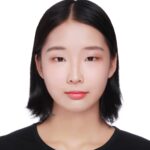
MPHIL STUDENT
Veronica (Yubo) Chen
Read Bio
Trustworthy Deep Learning for Fracture Detection
Veronica joins us as a capstone project student from QUT’s School of Mechanical, Medical and Process Engineering. Under the supervision of Prof. YT Gu, Dr Laith Alzubaidi, and Dr Harshala Gammulle (School of Electrical Engineering and Robotics) Veronica aims to develop robust and accurate deep learning algorithms for use in the orthopaedic industry that are trustworthy and improve patient clinical outcomes.
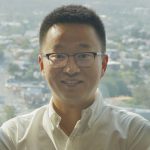
PhD Student
Xiaolong Fan
Read Bio
Xiaolong is our PhD student in shoulder biomechanics at QUT. He takes a multidisciplinary approach that encompasses the modelling and experiment to support surgery selecting suitable implant for independent patients basic on CT image. He holds master’s degree from QUT which focused on understanding of biomechanical properties of red kangaroo shoulder humeral cartilage.’

PHD STUDENT
Yilan Zhang
Read Bio
“Magnetic resonance imaging (MRI) protocols and analysis pipelines for automated reconstruction of shoulder anatomy.”
Yilan is a first-year PhD student in biomedical engineering at UNSW. Her main research interest centres around image-based anatomical modelling of human shoulder muscles. Her PhD project aims to develop magnetic resonance imaging (MRI) protocols and analysis pipelines for automated reconstruction of shoulder anatomy. Using statistical shape modelling techniques, population-representative three-dimensional shoulder models will be generated that can be used in computational models of the shoulder.

AFFILIATE PHD
Yuanyuan Wei
Read Bio
Yuanyuan is a PhD candidate in the School of Design at the Queensland University of Technology. Her current research focuses on the human-centred design (HCD) framework for the design of wearable devices for home-based rehabilitation of shoulder movement.
She completed the Master of Interaction Design from the University of Queensland and the Master of Fine Arts from the Beijing University of Chemical Technology. Her research also spans the areas of Mixed Reality and Human-Computer Interaction (HCI).

